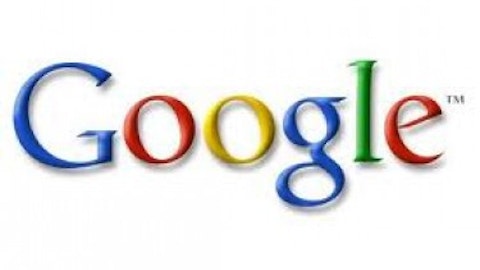Shares of recommendations site recently surged after it released its first quarter earnings, which suggested that the company was edging towards profitability. However, I believe that investors should avoid the temptation to chase this rally, since Yelp Inc (NYSE:YELP)’s business model still has major fundamental flaws.

I believe that despite Yelp’s recent success, there can only be two possible endgames for the San Francisco-based company — it will either get marginalized into obscurity by and, or it will be bought out by a larger company, such as.
In this article, I’ll explain the major threats to Yelp’s survival.
For its first quarter, Yelp Inc (NYSE:YELP)’s revenue rose 68% from the prior year quarter to $46.1 million. This was attributed to a 43% increase in monthly unique visitors to 102 million, which contributed to a 42% increase in total site reviews. Active businesses rose 63% year-on-year to approximately 45,000, while claimed local businesses increased by 58% to 1.1 million.
Despite this rapid growth in revenue, visitors, reviews and participating businesses, Yelp Inc (NYSE:YELP) failed to report a profit. However, its net loss of $4.8 million, or $0.08 per share, was much better than the $9.8 million loss it posted a year earlier.
During its conference call, Yelp stated that it intends to continue focusing on three main areas — mobile growth, international expansion, and local businesses.
Yelp Inc (NYSE:YELP)’s mobile app is now installed on roughly 10 million devices worldwide, which led to 36% of its total ads being displayed on mobile platforms, up from 25% during the fourth quarter; 30% of Yelp’s total monthly unique visits came from mobile devices. While that growth sounds impressive, Facebook Inc (NASDAQ:FB) recently announced that two-thirds of its 1.1 billion worldwide users are logging onto the site through their phones. That means Yelp has to accelerate its mobile growth more aggressively if it aspires to achieve Facebook-like mobile saturation.
Meanwhile, Yelp Inc (NYSE:YELP) introduced display ads in France and Spain during the first quarter. Yelp claims that Spain’s unique monthly visitors topped a million for the first time. It also recently announced that it had expanded into New Zealand. However, despite expanding into 21 countries, Yelp’s international revenue only contributed to 6% of its top line. This suggests that Yelp is getting ahead of itself in terms of global expansion, and a look at revenue versus expenses over the past two years confirms that.
Another company that got ahead of itself was Groupon Inc (NASDAQ:GRPN), which expanded into too many markets at once, without pausing to allow revenue growth to catch up to expenses. Both Yelp and Groupon Inc (NASDAQ:GRPN) follow the classic Internet growth model of prioritizing revenue growth ahead of profits.
Lastly, Yelp is working with local businesses to form ways to better measure the impact of Yelp reviews. During the quarter, Boston Consulting Group published a research report on Yelp’s impact on local businesses. The report claimed that local businesses see an average annual revenue boost of $8,000 by claiming a free Yelp business owner account. Moreover, a local business that buys advertising on Yelp, for an average of $4,000 per year, was found to gain an average of $23,000 in annual revenue.
While that sounds like a beefy return on investment for advertisers, some local businesses have called for a boycott of Yelp Inc (NYSE:YELP), due to the unreliability of its reviews. Critics claim that many businesses bribe customers or freelance writers to post favorable reviews, while Yelp allegedly suppresses unfavorable reviews of paid advertisers. Yelp has also been accused of extorting customers for paid advertising in exchange for the removal of negative reviews.
Therefore, Yelp still has a lot of unresolved issues that could still sink the company. Two major obstacles are already looming on the horizon: Facebook and Google Inc (NASDAQ:GOOG).
Versus Facebook
Last year, Facebook released its “Nearby” feature for Android and iOS mobile devices. This modification to its “Check-In” function located nearby businesses, and sorts them according to those that friends have liked, recommended or checked into. Users can also sort businesses by category and view additional details, such as their Facebook business pages. Facebook recently re-designed its business pages, streamlining them for mobile platforms and integrating them into its “Nearby” features.
The most significant function in Facebook’s “Nearby” feature is its star rating system, which is similar to Yelp. This adds a new dimension to Facebook’s “Check-In” ability, which had been previously considered a superfluous sharing function. “Nearby” now makes check-ins and ratings an essential part of the mobile experience, which will grow over time and become a major threat to Yelp’s core business model.
The beauty of Facebook’s Yelp-like features is that the company doesn’t need to rely on this segment to even make money. It can simply be used to draw traffic to its main site, which can boost overall mobile ad revenue. Therefore, Facebook could be considered a more neutral platform than Yelp, which needs revenue from local advertisers to survive.
Most importantly, Facebook’s new home screen launcher replacement for Android, Facebook Home, could bury Yelp so far under its own ecosystem that it eventually becomes forgotten and irrelevant.
Versus Google
Google is an even bigger problem for Yelp. Google Maps are now the most commonly used mapping service on both Android and Apple Inc. (NASDAQ:AAPL) iOS devices. Google now integrates its Places feature, which allows users to search and rate local businesses, directly into Maps, which combines the two previously separate applications into one seamless experience.
In addition to user reviews, Google pulls data from review site Zagat to produce a Yelp-like experience within Google Maps. Android users only have to search for an item like “sushi,” and star-rated red dots appear, directing users to suggested Japanese restaurants nearby. Meanwhile, Google Maps/Places is directly integrated into the Android system, so another click will allow users to directly call the restaurant to make reservations, and another click maps out driving directions. Users can also use Google Street View to check out the surroundings so they can recognize the exterior upon arrival.
In contrast, Yelp users have to leave the mobile app to find the directions to the business, and only offers either a list view or map view, unlike the seamless, combined nature of Google Maps/Places. Meanwhile, Yelp also lacks the social component that Google+ adds to the Maps/Places experience.
Google attempted to acquire Yelp two years ago for $500 million. Although it was rejected at the time, Google might have the last laugh after all, as its Maps/Places app continues to marginalize Yelp.
In closing, I’ll reiterate what I said two months ago:
Yelp needs help. Perhaps Yahoo or will swoop in to purchase the company to integrate into a larger ecosystem, but I doubt that Yelp can last much longer in its current state.
Although Yelp was built on a solid, innovative idea, that company simply has no competitive barriers. Meanwhile, Facebook and Google have the user base, the mobile presence, and capital to bury Yelp for good.
The article Yelp Still Needs Some Serious Help originally appeared on Fool.com is written by Leo Sun.
Copyright © 1995 – 2013 The Motley Fool, LLC. All rights reserved. The Motley Fool has a disclosure policy.





